
Secondary Spices used in Indian Cooking

If you’ve read my previous articles titled “Spices that Add Flavor to Indian Cuisine”, you would have a basic idea of the essential spices that are used in the Indian kitchen. In this article, we look at the secondary spices that complement the main ones to add to the flavor of the food. Some are even used solely for the purpose of infusing a fragrance to the dish. They are rarely used alone and never in any great quantity.
Fennel Seeds (Saunf)
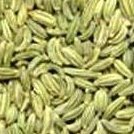
Fennel seeds are most famous in India as a digestive and mouth freshener. Fennel seeds coated with sugar are usually served in Indian restaurants at the end of the meal. It isn’t used extensively in cooking although some dishes add powdered fennel seeds to make the preparation more aromatic.
Fenugreek Seeds (Methi)
Fenugreek seeds have a slightly bitter taste and it is usually used in a lot of meat preparations. It’s well known for its medicinal properties and holds an important place in both North and South Indian cooking. Again, it is used in very small quantities.
Nigella Seeds/ Black Caraway (Kalonji)
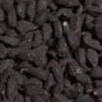
Nigella seeds are also known as onion seeds in some places although they have absolutely no connection to the vegetable. They are used mainly in North Indian cooking and, before being added them to the food, are toasted slightly to enhance their flavor.
Carom Seeds (Ajwain)

Those who’ve tasted ajwain will put the taste somewhere between that of thyme and pepper. It’s more common to the dishes of Gujarat and Maharashtra in India and it’s also added to snacks, paranthas, and deep fried preparations to improve their flavor.
Green Cardamom (Choti Elaichi)
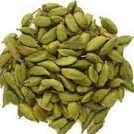
Perhaps the most popular use of cardamom is in the making of the very famous masala chai and a variety of Indian sweets and desserts. While the cardamom pod in itself is neutral, the brown seeds inside are rich in flavor and aroma. When storing, the pods should be kept as a whole or the cardamom will lose its flavor. It’s also common practice for Indians to chew on green cardamom after dinner since it’s an excellent mouth freshener and helps control bad breath.
Black Cardamom (Kala Elaichi)
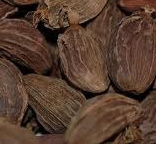
Black cardamom is a lot bigger than green cardamom and has a coarser flavor. It is generally used in meat and poultry preparations and to spice up rice dishes like biryani or pulao.
Cinnamon (Dalchini)

Cinnamon needs no introduction since it is not a spice that is exclusive to India. Its warm, sweet flavor and enticing aroma has flavored baked dishes, food, desserts and drinks all over the world. In India, cinnamon can be added to virtually any preparation to give it that special flavor and aroma.
Cloves (Laung)
Cloves are actually dried flower buds that have an extremely strong and pungent flavor. They are used to make garam masala and form an essential ingredient in many meat dishes. Clove oil is highly valued in India for its medicinal properties and many Indians are known to chew on cloves everyday because it relieves toothache.
Nutmeg (Jaiphal)

Although a whole spice, nutmeg is usually grated to form a powder and rarely used as a whole. The powdered form, though, is used mostly in Indian sweets though occasionally you may find it mentioned in the recipe of a few savory dishes as well.
Mace (Jaivitri)
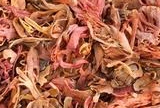
Mace and nutmeg are both derived from the same plant. While nutmeg is the seed, mace is the dried reticulated ‘aril’ of the same fruit. Its flavor is pleasant but after cooking, mace is removed from the dish, since biting into this spice doesn’t leave a great taste in your mouth. It’s used to flavor vegetable preparation, meat curries, Indian desserts, and masala chai.
Bay Leaves (Tejpatta)
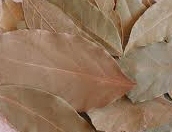
Bay leaves have a taste that is somewhat similar to that of clove and a fragrance like that of pepper. It is used extensively in meat dishes and rice preparations and also forms an important ingredient in garam masala.
Saffron (Kesar/Zafran)

Saffron is considered to be the most expensive spice in the world. In order to make just one pound of saffron, more than two hundred thousand stigmas from the crocus sativus flower has to be collected. That too, in a harvesting season that lasts just about ten days or so in year. Considering how valuable it is, you won’t find saffron being commonly used and it is reserved only for the MOST special among special occasions.




